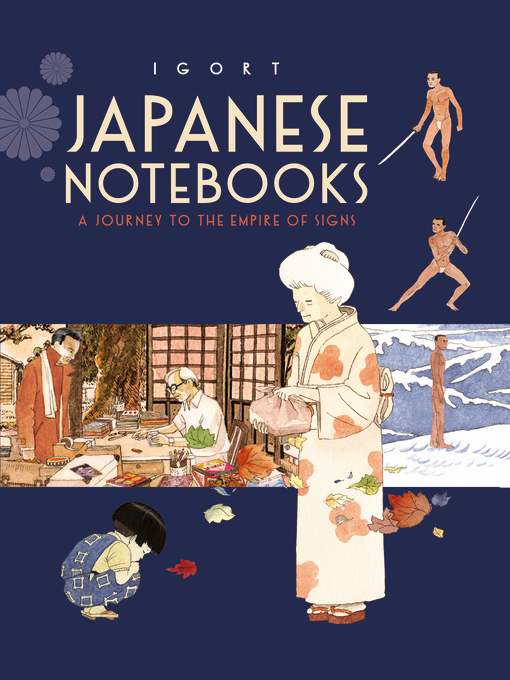
Japanese Notebooks
A Journey to the Empire of Signs
کتاب های مرتبط
- اطلاعات
- نقد و بررسی
- دیدگاه کاربران
نقد و بررسی

March 6, 2017
In this pleasantly meandering graphic album, Italian cartoonist Igort (The Ukrainian and Russian Notebooks) collects his scattered impressions of Japan, stitching together short stories, essays, and samples of the comics he drew for manga publisher Kodansha while living in Tokyo. As a foreign-born manga artist, he’s put through the rigors of the true manga-ka lifestyle, including the time-honored ritual of being shut in a hotel room by his editors—“under house arrest”—until he meets his deadlines. He talks art with renowned creators Yoshihiro Tatsumi and Jiro Taniguchi and discovers WWII-era manga and anime. Igort is enamored of all things Japanese, writing, “I had convinced myself and my editors at Kodansha that I was Japanese in a past life.” If this rose-colored view is a touch naïve, Igort’s warmly colored art, combining the elegant clear line of European comics with the expressive simplicity of manga and a touch of ukiyo-e, goes a long way toward selling his vision. Agent: Debbie Bibo.

Starred review from April 15, 2017
After publishing Goodbye Baobab (1985), a book heavily influenced by Japan, Italian born Igort was invited to work with Kodansha, the largest manga publisher in Japan. For the next decade, he spent time living and working in Japan, all the while recording in a series of notebooks the things he saw, what he learned, and the stories he heard. Mixing detailed sketches and delicate watercolors with occasional historic photographs and pen-and-ink portraits of the people he worked with, the resulting collection is less a complete story and more a conversation with the reader, complete with humorous anecdotes, tangential asides, and the occasional rant about how insane the workload is in Japan compared to what artists are expected to produce in Europe. Throughout the narrative runs a deep respect for the country and its customs. He draws inspiration from its poets and philosophers, its artists and courtesans, its temples and its skyscrapers. Dedicated to Hokusai and Tezuka, one considered the creator of manga, the other known as the Father of Manga, and ending with an enso or hand-drawn circle that in Zen Buddhism symbolizes enlightenment, this memoir is ultimately the author's reflection on art and memory and the constancy and inconsistency of both. A captivating glimpse into the mind of an artist.(Reprinted with permission of Booklist, copyright 2017, American Library Association.)

























دیدگاه کاربران